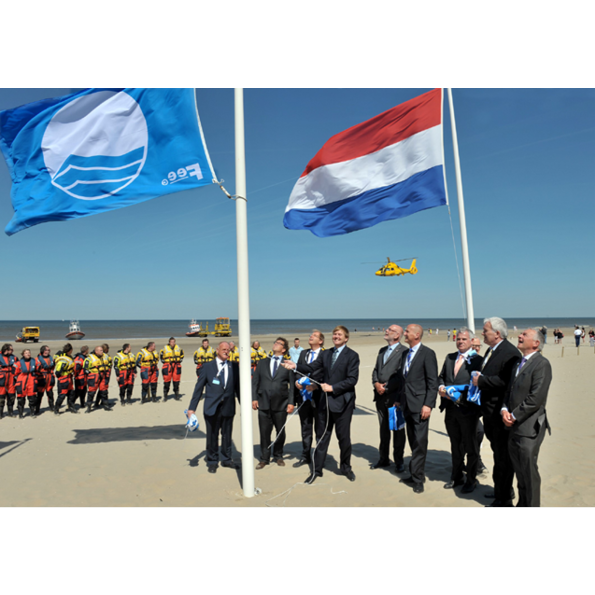Blue Flag Award
![]()

“If you can't measure it, you can't improve it.” This was said by the theorist of business and management Peter Drucker. If the quality or quantity of something is not worth measuring and recording,what is the chance that it will be improved or cared about? Reflecting this statement, many campaigns now focus on measuring and recording values they care about. By simply measuring pollution, the number of cyclists or the variety of species on a peice of land, the case is made for why they are important and why the situation should be improved.
In parenting the sticker chart is a common tool for encouraging good behaviour in children. Mirco-rewards may cost little to give, but the result of giving them is valuable and reinforces positive behaviour. This technique of positive reinforcement does not just work on children.
The Blue Flag award is given to beaches and marinas that meet an extensive set of criteria related to quality, safety, environmental education, the provision of services and environmental management; for beaches there are almost 30 different criteria. Locations award it are widely recognised as being of excellent quality, and the award is well known by the public. The award was started in 1987 by the NGO, the Foundation for Environmental Education in Europe (FEEE). Due to global interest, in 2001 the foundation dropped its association to only Europe and became FEE. The foundation is funded by its membership of state governments. In 2015, 4,154 blue flags were flying at beaches, marinas and tourism businesses. The top five nations with blue flags were Spain, Turkey, Greece, France and Italy, all countries with valuable beach tourism industries. Whilst the award can be seen as a micro-reward like the child’s sticker chart, as it has no financial prize attached to it, it is a valuable tool in branding resorts and encouraging tourism and is thereby sought after.
Whilst many understand the blue flag to be a mark of quality and high environmental standards, few would know the extensiveness of the criteria. This may not be a bad thing, if the criteria are robustly written it can lead to wide benefits beyond those assumed by visitors. However if a lack of a blue flag is then taken to be a sign of poor quality this could be problematic. A beautiful, remote beach may have the highest environmental standards and excellent conditions, but due to a lack of other infrastructure such as a beach map, disabled toilet facilities or easy access, the beach would not qualify for the award. It may even be that some locations would qualify, but the administration simply has not happened. If these locations’ lack of blue flags was taken as a negative judgement of them, this would paint a false picture.
← Back to Lexicon
King Willem-Alexander raising the blue flag
Sources: The Foundation for Environmental Education
Sources: The Foundation for Environmental Education
